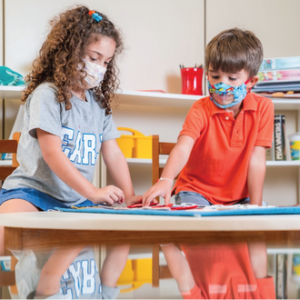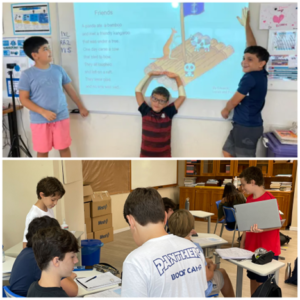Distance Learning and changes on teaching

Following one of my recent grade-level parent meetings, a parent asked me how teachers have changed their instructional approach due to Distance Learning.
This struck me as both a simple and yet very complex question, which drew my mind back more than 20 years, when I was working on implementing significant program changes in a large school district in Washington state as part of the overall trend in school reform. At the time, we focused on differentiating between first-order and second-order changes. Many schools in the United States had a history of reforming schools without improving schools.
First-order changes were made, but second-order changes did not necessarily occur. For example, schools would focus on reducing class size (a first-order change), with the hope that this would lead to greater differentiation and higher student achievement (a second-order change). Another example was a shift to longer 90-minute teaching blocks (another first-order change), in order to create collaborative ownership of learning (a second-order change).
Fast forward to our current situation in 2020 and the Distance Learning program we have in place. Is this a first-order change or a second-order change? It is initially a first-order change, required within the context of a pandemic that forced campuses to close. It is a strategy that has been put in place to ensure students can continue to access learning and teachers can continue to provide instruction.
But is the Distance Learning program leading to second-order change or an expanded philosophy of teaching and learning? My initial response would be “not necessarily”. All of us have been so focused on adapting to the nuts and bolts of Distance Learning, using Google Meet or Zoom, having cameras on and microphones muted, educating ourselves on tech options out there or online curriculum, recording lessons on Seesaw, etc., that we have had little time to pause and reflect.
However, educators and researchers around the world are beginning to engage in a collective reflection about this new context of learning, and one summary of this reflection is captured in the introduction to a recent publication, entitled The Distance Learning Playbook, Grades K-12: “Distance Learning is not an accelerator. It’s also not negative. That means the setting isn’t the deciding factor,” or, in other words, “What we do matters, not the medium for doing it”.
At EARJ, the expectation for teachers, regardless of the medium, is that they are able to differentiate for students, create purposeful engagement, with high quality planning, and meaningful use of educational technology. This expectation has not changed due to distance learning. Teachers and students, alike, however, have had to blaze new trails in working together online, offline, through email, chats, and posts, regardless of grade level.
In many ways, learning has changed more than teaching through the distance format. This experience has highlighted the importance of the attributes of the IB Learner Profile (details at this link) that we want to develop in all of our students. For example, engaging in inquiry, which includes knowing “how to learn independently and with others,” or communicating, which includes expressing “ourselves confidently, creatively, in more than one language, and in many ways,” or being risk-takers, who “work independently and cooperatively to explore new ideas and innovative strategies and are resourceful and resilient in the face of challenges and change”.
EARJ students have been compelled through distance learning to develop these attributes in order to learn in this context, and, for many, they are beginning to lead the way to finding their path!
Howard De Leeuw
Gávea Upper School Principal



